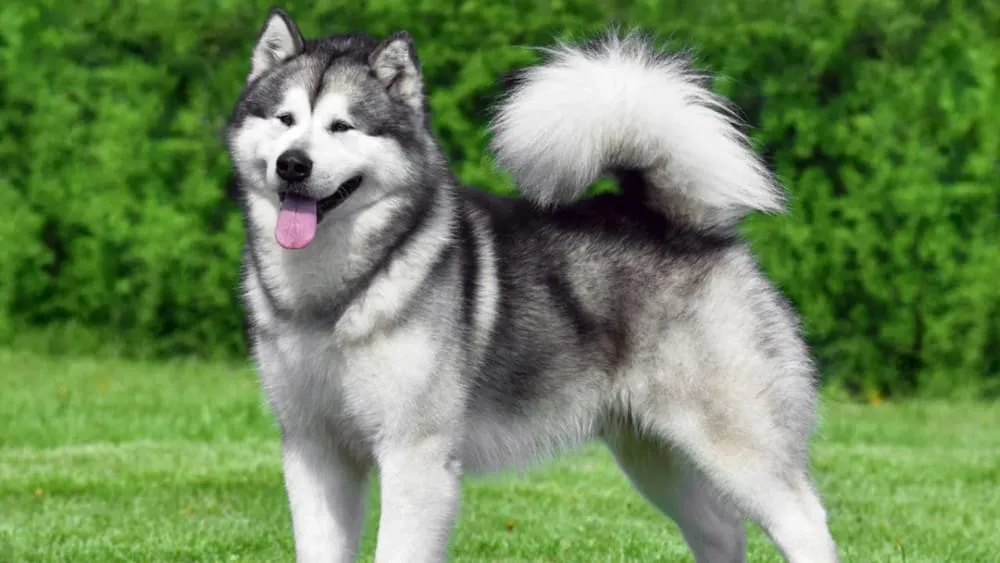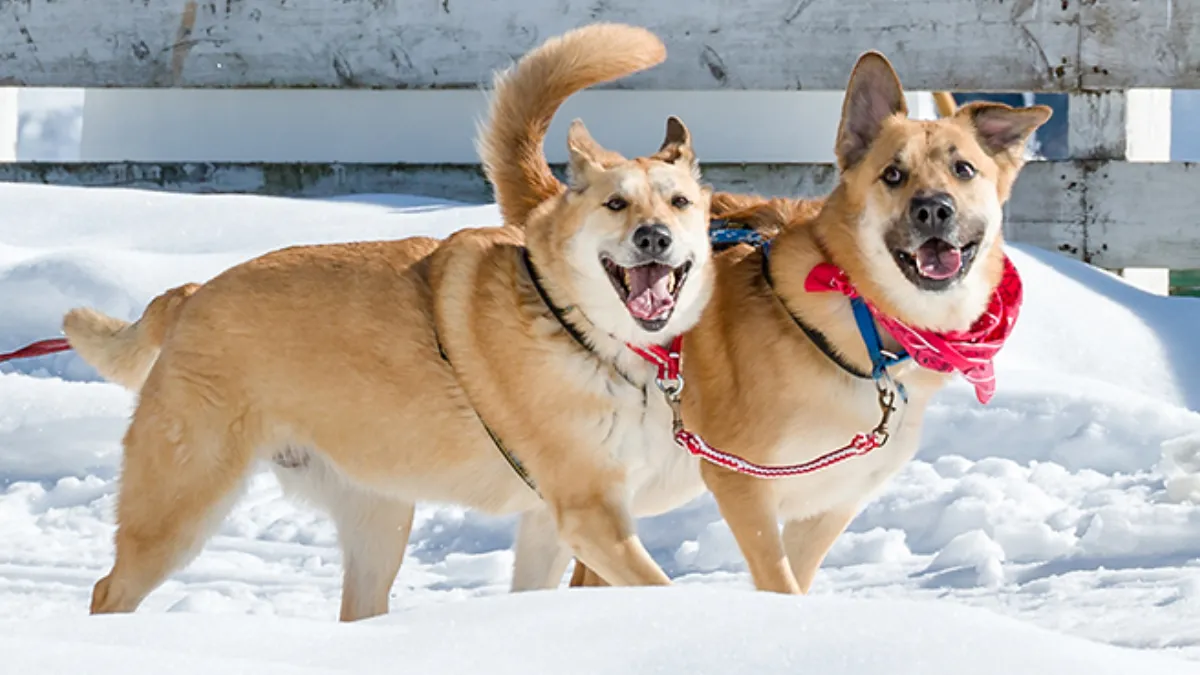Examining the distinct symbols reflecting the culture and history of each state, the state dog emerges as a notable representative. What is Every State's State Dog? This inquiry unveils a fascinating aspect of American identity. While not every state designates an official canine ambassador, many have embraced specific breeds that contribute significantly to their unique cultural tapestry. These chosen breeds serve as living symbols, embodying the spirit and character of the states they represent. Thus, the state dog becomes an integral part of each state's identity, reflecting a blend of heritage, pride, and the diverse narratives that shape the nation.

The idea of having a state dog originated in the 1960s when many states began adopting official state symbols. Since then, over a dozen states have designated a specific breed as their official state dog. Some states have even chosen more than one breed to represent their unique culture and heritage. These breeds range from the Alaskan Malamute in Alaska to the Boston Terrier in Massachusetts and the Plott Hound in North Carolina.
Knowing each state's state dog is not only interesting, but it can also provide insight into the state's history and values. From hunting dogs to sled dogs, each breed represents a different aspect of the state's culture. In this article, we will explore every state's official state dog and learn about the unique qualities that make each breed special.
History and Significance of State Dogs
State dogs have been a part of American culture for over a century. These dogs are officially recognized as a symbol of their respective states and are often chosen for their historical significance, loyalty, and unique characteristics. In this section, we will explore the history and significance of state dogs.
Historic Recognition of State Dogs
The tradition of recognizing state dogs began in 1965 when Maryland became the first state to officially recognize a state dog breed. The Chesapeake Bay Retriever was chosen as the official state dog breed due to its historical significance in the state. The breed was developed in Maryland in the 19th century for hunting waterfowl in the Chesapeake Bay.
Since then, many other states have followed suit and recognized their state dog breeds. Some of the most popular state dog breeds include the Alaskan Malamute in Alaska, the Boston Terrier in Massachusetts, and the Plott Hound in North Carolina.
Official State Dog Breeds and Their Roles
Each state dog breed has its unique characteristics and roles. For example, the Alaskan Malamute was chosen as the official state dog breed of Alaska due to its strength and ability to pull heavy loads in harsh winter conditions. The Plott Hound, on the other hand, was chosen as the official state dog breed of North Carolina due to its hunting abilities and loyalty.

State dogs not only serve as a symbol of their respective states but also play an important role in their communities. Many state dog breeds are used as working dogs, such as search and rescue dogs, therapy dogs, and police dogs. They also serve as loyal companions to their owners and are often featured in state events and parades.
In conclusion, state dogs are an important part of American culture and history. They serve as a symbol of their respective states and play a significant role in their communities. Each state dog breed has its unique characteristics and roles, making them a valuable addition to the American canine family.
State-Specific Dog Breeds
Each state in the United States has its own unique culture and traditions, and this extends to their choice of state dog breeds. Here are some of the state-specific dog breeds that are recognized across the country.
Maryland and the Chesapeake Bay Retriever
The Chesapeake Bay Retriever is the state dog of Maryland, and it's not hard to see why. This breed was originally developed in the Chesapeake Bay area to retrieve waterfowl, and it's known for its strong swimming abilities and loyalty to its owner. Chesapeake Bay Retrievers are also known for their distinctive coat, which is thick and wavy and comes in shades of brown, sedge, and deadgrass.

Massachusetts and the Boston Terrier
The Boston Terrier is a small breed that was developed in Boston, Massachusetts in the late 1800s. It's a lively and affectionate dog that is known for its distinctive "tuxedo" coat, which is black and white. Boston Terriers are also known for their intelligence and trainability, which makes them a popular choice for families and individuals alike.
New Hampshire and the Chinook
The Chinook is a breed that was developed in New Hampshire in the early 1900s. It's a medium-sized dog that was originally bred for sled pulling and other outdoor activities. Chinooks are known for their friendly and loyal personalities, as well as their distinctive coat, which is a rich shade of gold. This breed is relatively rare, but it's beloved by those who know it well.
North Carolina and the Plott Hound
The Plott Hound is a breed that was developed in North Carolina in the 1700s. It's a medium-sized dog that was originally bred for hunting wild boar and other game. Plott Hounds are known for their strong sense of smell and their tenacity when it comes to tracking down prey. They also have a distinctive brindle coat that comes in shades of black, brown, and tan.
Overall, these state-specific dog breeds are a testament to the unique cultural traditions and history of each state. Whether you're a dog lover or simply interested in learning more about the United States, these breeds are sure to capture your imagination.
Roles of State Dogs in Society
State dogs are more than just symbols of pride and loyalty. They play important roles in society, serving as working dogs, service dogs, rescue dogs, and even adoptable dogs. In this section, we will explore the different roles of state dogs and their duties.

Working Dogs and Their Duties
Working dogs are highly trained to perform a variety of tasks, such as herding livestock, guarding property, and assisting law enforcement. Many state dogs are working dogs, chosen for their intelligence, loyalty, and obedience.
For example, the state dog of Georgia is the American Bulldog, which is known for its strength and courage. American Bulldogs are often used as working dogs on farms and ranches, where they help herd livestock and protect property from intruders.
Similarly, the state dog of Alaska is the Alaskan Malamute, which is a powerful and hardworking breed. Alaskan Malamutes are often used as sled dogs, helping to transport people and supplies across the snowy terrain.
Service Dogs and Emotional Support
Service dogs and emotional support dogs are trained to assist people with disabilities or mental health conditions. They provide essential support and companionship to their owners, helping them to live more independent and fulfilling lives.
The state dog of New York is the Golden Retriever, which is a popular breed for service and emotional support work. Golden Retrievers are known for their friendly and gentle nature, making them ideal companions for people with disabilities or mental health conditions.
In addition, the state dog of Massachusetts is the Boston Terrier, which is a small and affectionate breed. Boston Terriers are often used as therapy dogs, visiting hospitals and nursing homes to provide comfort and companionship to patients.
Overall, state dogs play important roles in society as working dogs, service dogs, and emotional support dogs. Their loyalty, intelligence, and obedience make them valuable assets to their communities, and their presence serves as a reminder of the important role that dogs play in our lives.
Adoption and Rescue Initiatives
Promotion of Adoptable Dogs as State Dogs
Many states have recognized the importance of promoting adoptable dogs as state dogs. By doing so, they hope to encourage more people to adopt shelter pets and rescue dogs and cats. For example, in 2018, Colorado designated the shelter dog as the official state pet to promote animal adoption. In 2021, Delaware designated the shelter dog as the official state dog to raise awareness about the benefits of adopting dogs from shelters.
Rescue Organizations and State Dogs
Rescue organizations play a vital role in the adoption and rescue initiatives for state dogs. They provide temporary homes for dogs and cats that have been abandoned, abused, or surrendered by their owners. Many rescue organizations work closely with state governments to promote animal adoption and rescue. For example, in Texas, the state dog is the Blue Lacy, a breed that was developed in the state. The Blue Lacy Association works with local animal shelters and rescue organizations to promote the breed and encourage adoption.
In conclusion, promoting adoptable dogs as state dogs and working with rescue organizations are important initiatives to encourage animal adoption and rescue. By recognizing the importance of shelter pets and rescue dogs and cats, states can help reduce the number of animals that are euthanized each year and provide loving homes for animals in need.
Cultural and Symbolic Representations
State Dogs in Arts and Media
State dogs have been represented in various forms of artistic and media expression, including literature, music, and visual arts. For instance, the Alaskan Malamute, which is the state dog of Alaska, has been featured in many movies and TV shows, such as "Iron Will" and "Snow Dogs." Similarly, the Plott Hound, which is the state dog of North Carolina, has been depicted in several novels, including "The Plott Hound: A Hunter's Companion" by Bob Plott.
State Dogs and State Symbols
State dogs have also been incorporated into state symbols, such as flags, mottos, seals, trees, flowers, and birds. For example, the Boston Terrier, which is the state dog of Massachusetts, is featured on the state's official seal. The Chesapeake Bay Retriever, which is the state dog of Maryland, is depicted on the state's official flag. The Great Dane, which is the state dog of Pennsylvania, is the official state dog since 1965.

In addition, state dogs have been used to promote state tourism and commerce. For instance, the Saint Bernard, which is the state dog of Vermont, is often associated with the state's ski resorts and winter sports. The Boykin Spaniel, which is the state dog of South Carolina, is frequently used in advertising campaigns to promote the state's hunting and fishing industries.
Overall, state dogs play a significant role in the cultural and symbolic representations of each state. They are not only beloved pets but also important cultural and historical symbols that reflect the unique characteristics and values of each state.
Legislation and Official Recognition
Process of Establishing an Official State Dog
The process of establishing an official state dog varies from state to state. In some cases, it is initiated by a group of citizens who petition their state legislature to recognize a particular breed as the state dog. In other cases, the state legislature may take the initiative to recognize a breed that is particularly popular or significant in the state.
Once a breed has been proposed as a state dog, it typically goes through a period of public comment and review before a final decision is made. This may involve input from breed clubs, veterinary associations, and other interested parties.
State Dogs and Legal Frameworks
In many states, the official recognition of a state dog is codified in state law or the state constitution. This legal recognition can have several implications, such as making the state dog eligible for special protections or designations.
For example, in Massachusetts, the state dog is the Boston Terrier, and the breed is recognized as the official state dog in state law. This recognition means that the Boston Terrier is eligible for special license plates and other official designations.
In other states, the official state dog is recognized through executive order or other non-binding means. While these designations may not have the same legal weight as those codified in law, they can still be significant symbols of state pride and identity.
Overall, the recognition of state dogs is a way for states to celebrate their unique cultural and historical heritage, as well as to recognize the important role that dogs play in our lives.

Breed-Specific Characteristics and Care
Health and Temperament of State Dog Breeds
Each state dog breed has its unique characteristics when it comes to health and temperament. For example, the Alaskan Malamute, which is the state dog of Alaska, is known for its strength and endurance. They require regular exercise and a healthy diet to maintain their muscular build. The Great Dane, which is the state dog of Pennsylvania, is a gentle giant that requires a lot of attention and socialization to prevent anxiety and aggression.
The American Foxhound, which is the state dog of Virginia, is a highly energetic breed that requires regular exercise and mental stimulation to prevent destructive behavior. They are also prone to certain health issues such as hip dysplasia and ear infections. The Labrador Retriever, which is the state dog of both Minnesota and Pennsylvania, is a friendly and loyal breed that requires a lot of exercise and mental stimulation to prevent obesity and boredom.
Maintenance and Training of Official Dog Breeds
Proper maintenance and training are crucial for the health and well-being of state dog breeds. Regular grooming, including brushing and bathing, is important to prevent skin infections and maintain a healthy coat. Training should include socialization, obedience, and agility to prevent behavioral issues and ensure a well-behaved dog.
It is also important to provide a healthy diet and regular exercise to prevent obesity and maintain a healthy weight. Regular visits to the veterinarian are necessary to prevent and treat any health issues that may arise. By providing proper care and training, state dog breeds can live a happy and healthy life.
Conclusion:
Exploring the comprehensive list of every state's state dog unveils a captivating journey through diverse canine representatives contributing to the cultural fabric of the United States. What is Every State's State Dog? While not every state designates an official canine ambassador, those that do showcase a fascinating mix of breeds with symbolic significance. From the energetic Border Collie of South Carolina to the loyal Alaskan Malamute of Alaska, each state's chosen dog reflects a unique aspect of its history, heritage, or characteristics. This compilation underscores the importance of these canine figures in shaping state identity, fostering pride, and creating connections between people and their beloved four-legged companions. Delving into state dogs provides insights into the rich tapestry of American culture, where even our canine friends play a role in telling the story of each state.
Frequently Asked Questions
Which breeds are designated as official state dogs across the United States?
Various dog breeds are designated as official state dogs across the United States. Some of the most popular breeds include the Alaskan Malamute, the Boston Terrier, the Great Dane, the Louisiana Catahoula Leopard Dog, the Plott Hound, and the Siberian Husky.
How is a state dog breed selected and recognized in various states?
The process of selecting and recognizing a state dog breed varies from state to state. In some cases, it may be based on the breed's historical significance to the state, while in other cases, it may be based on the breed's popularity or unique characteristics.
What are some examples of state dog breeds in the western United States?
Some examples of state dog breeds in the western United States include the Alaskan Malamute in Alaska, the Chinook in New Hampshire, the Louisiana Catahoula Leopard Dog in Louisiana, and the Siberian Husky in Washington.
Are there any states that do not have an official state dog?
Yes, some states do not have an official state dog. Some states have designated state animals instead, while others have not designated any state symbols related to animals.
What is the process for a breed to become an official state dog?
The process for a breed to become an official state dog varies from state to state. In general, it may involve legislation or a petition process to officially recognize the breed as the state dog.
How do state dog designations reflect the culture or history of the state?
State dog designations can reflect the culture or history of the state in various ways. For example, the Louisiana Catahoula Leopard Dog is recognized as the state dog of Louisiana due to its historical significance in the state's hunting culture. Similarly, the Chinook is recognized as the state dog of New Hampshire due to its role in the state's sled dog racing history.